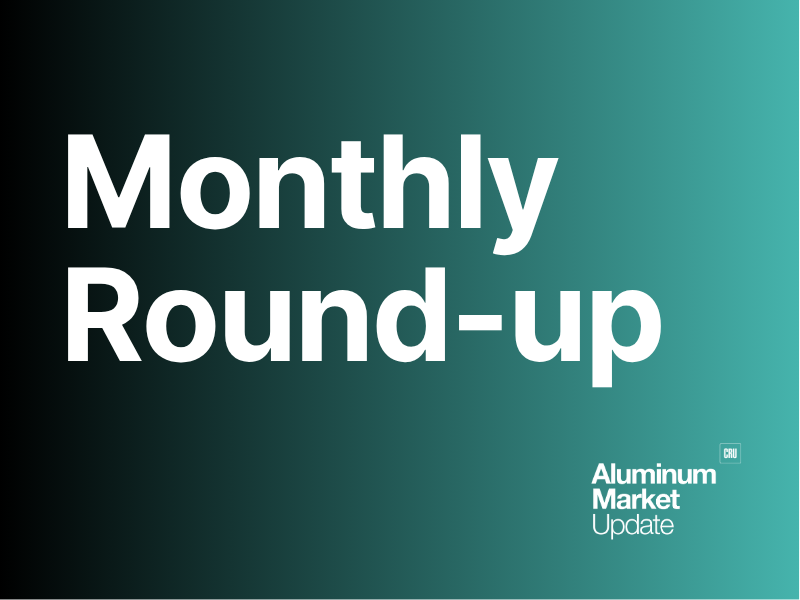Global Trade

January 15, 2025
The big bad backwardation – How the future’s spread will affect you
Written by Gabriella Vagnini
Some of you might be scratching your heads, wondering why you should even care about future’s spreads when you’re doing deals back-to-back. Well, hang tight, and I’ll break it down for you in plain terms.
What happened to the Mar-April aluminum spread on the LME?
The spread between March and April went into a backwardation, with London Metal Exchange (LME) closing valuation at 9.69b. For those not familiar, backwardation means the price in the nearby is higher than a future price. In this March-April spread, the price for March was at $2,611.26 and April was at $2,601.57. So, if you had a short position in March and wanted to roll it into April, you will be losing $9.69/mt ($0.44/lb)
Here’s what likely went down: Some big player in the aluminum market took a massive position and rolled it forward. That left companies holding short positions for March-April scrambling to roll forward without taking a big lose.
Right away, this got me thinking about the copper crash of 2024 that I wrote about back in May. Remember when the copper spreads got squeezed, leaving market players stuck holding the bag? Losses were rumored to hit well over $100 million. Back then, the backwardation caused immediate delivery prices to shoot up, with the market placing a premium on having material available right away, thus mills witnessing a ton of companies not fulfilling their deliveries to them.
How does this affect you?
If you’ve sold physical metal to a mill but haven’t sourced it yet and you’ve priced that spread, this should definitely raise a red flag. This example could be used for selling into a mill.
Backwardation puts you at risk of being squeezed. Let’s say you sold, expecting prices to drop or close to level, but instead, prices for near-term delivery rallied. Now, you’re stuck buying at a higher price just to fulfill your order. It’s a fast way to lose margin…or worse, money.
Although with that said, it could a good indication that you should be looking to buy for future months. Either way, it’s a red flag for futures price and could indicate a physical supply shortage.
How backwardation impacts downstream players
Now, let’s flip this around. How does backwardation affect the extruders, rolling mills, fabricators, and distributors?
Extruders and Rolling Mills: If you’re operating on tight production schedules, a backwardation can actually work to your advantage. It lets you lock in material at today’s price for near-term delivery, keeping your costs steady in a volatile market.
Fabricators and Distributors: Fabricators can use backwardation to stock up now and hedge against rising prices later. Distributors might even boost margins by buying material in a backwardated market and selling when prices even out or go higher.
Example:
Let’s say the spot price is $2,500/mt for March, but May prices are $2,200. If you buy now, you’re protecting yourself against May prices jumping to $2,800. That is, if you can source the material and if your source actually has the metal available to fill the order. We saw firsthand many cooper mills shorted for inbound deliveries (both scarp and base) due to lack of supply and thus companies being out of the market.
A word of caution
While backwardation can offer opportunities, it’s also risky. Overbuying now could leave you holding excess inventory if the market flips back into contango (where future prices are higher). And if you’re not managing your exposure carefully, you could find yourself chasing losses instead of managing them.
My take on it
As someone who’s traded metals and hedged risk for major companies in the aluminum market, I’ve learned that a backwardation is one of those things that can make or break your position.
Whether you’re a trader, mill operator, or fabricator, the key is to stay on top of future’s price/spreads, even if you are in the secondary market and make sure you’re not caught off guard.
What to watch for that could indicate red flags
- Futures price fluctuations: Track shor-term price swings in futures contracts (1-3 month LME) to anticipate price movements and adjust procurement strategies.
- Backwardation vs. Contanto: Be aware of backwardation (higher near-term prices) and contango (higher future prices), as this can impact costs when sourcing aluminum now versus later.
- Open interest and volume: Monitor open interest and trading volumes in the futures market, this will help you gage to market sentiment and potential price volatility.
- Hedging opportunities: Understand when or even if to hedge using futures contracts. Think of it as metal insurance so you can lock in prices for future purchases, protecting against unfavorable price movements.
- Market news and geopolitical factors: Stay updated on supply disruptions (ie. Trump tariffs), protecting against unfavorable price movements.
I know this was a lot of information at once, especially if you don’t have a source for this information or just don’t have time to look it all up and try to make sense of it. We will keep you informed on these market indicators and keep educating you on what to look for and why.






